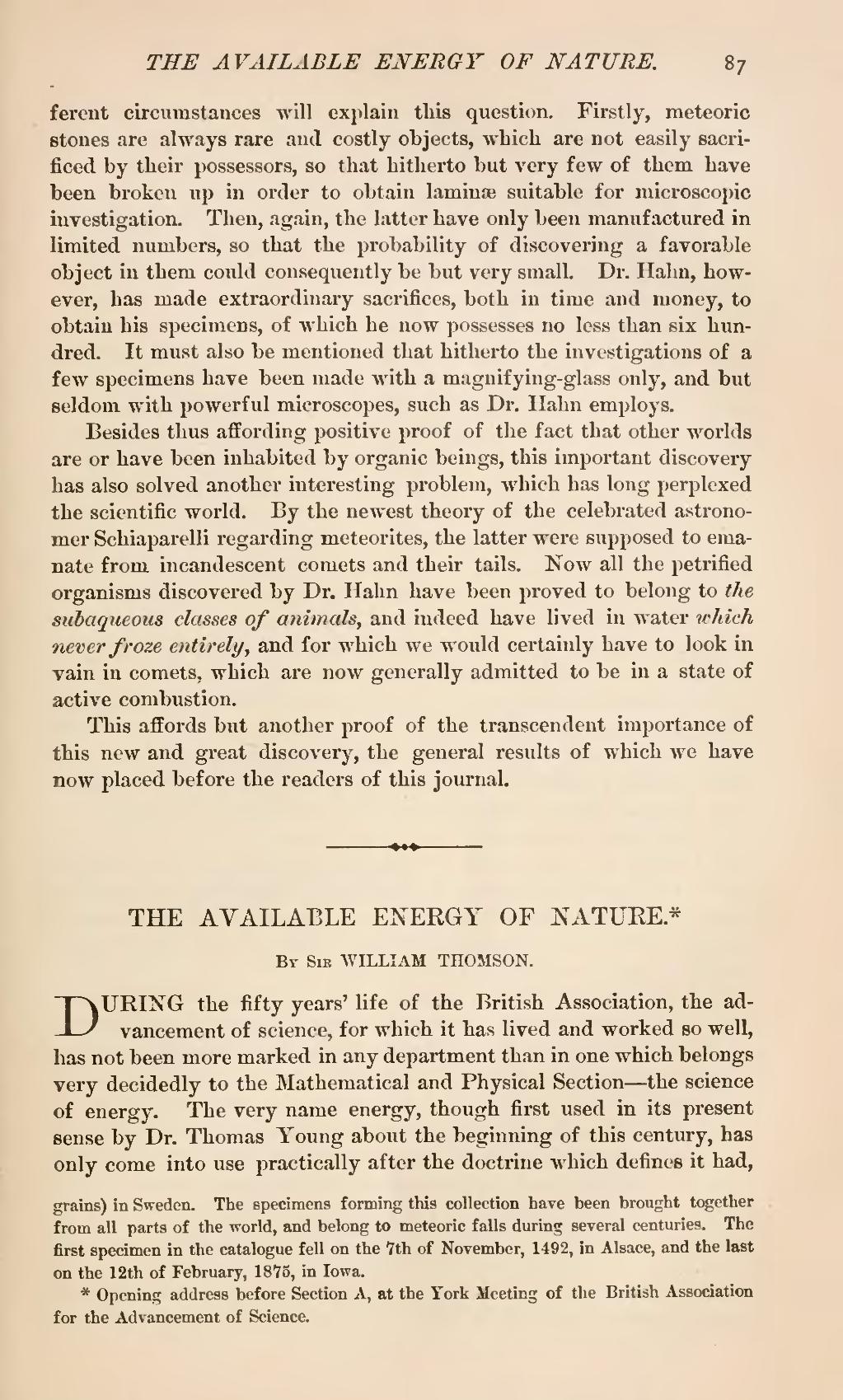ferent circumstances will explain this question. Firstly, meteoric stones are always rare and costly objects, which are not easily sacrificed by their possessors, so that hitherto but very few of them have been broken up in order to obtain laminae suitable for microscopic investigation. Then, again, the latter have only been manufactured in limited numbers, so that the probability of discovering a favorable object in them could consequently be but very small. Dr. Hahn, however, has made extraordinary sacrifices, both in time and money, to obtain his specimens, of which he now possesses no less than six hundred. It must also be mentioned that hitherto the investigations of a few specimens have been made with a magnifying-glass only, and but seldom with powerful microscopes, such as Dr. Hahn employs.
Besides thus affording positive proof of the fact that other worlds are or have been inhabited by organic beings, this important discovery has also solved another interesting problem, which has long perplexed the scientific world. By the newest theory of the celebrated astronomer Schiaparelli regarding meteorites, the latter were supposed to emanate from incandescent comets and their tails. Now all the petrified organisms discovered by Dr. Hahn have been proved to belong to the subaqueous classes of animals, and indeed have lived in water which never froze entirely, and for which we would certainly have to look in vain in comets, which are now generally admitted to be in a state of active combustion.
This affords but another proof of the transcendent importance of this new and great discovery, the general results of which we have now placed before the readers of this journal.
| THE AVAILABLE ENERGY OF NATURE.[1] |
By Sir WILLIAM THOMSON.
DURING the fifty years' life of the British Association, the advancement of science, for which it has lived and worked so well, has not been more marked in any department than in one which belongs very decidedly to the Mathematical and Physical Section—the science of energy. The very name energy, though first used in its present sense by Dr. Thomas Young about the beginning of this century, has only come into use practically after the doctrine which defines it had,
- ↑ Opening address before Section A, at the York Meeting of the British Association for the Advancement of Science.
grains) in Sweden. The specimens forming this collection have been brought together from all parts of the world, and belong to meteoric falls during several centuries. The first specimen in the catalogue fell on the 7th of November, 1492, in Alsace, and the last on the 12th of February, 1875, in Iowa.
